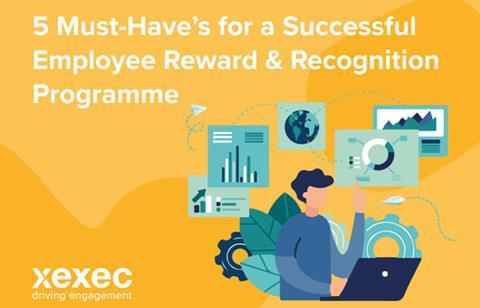
An employee Reward and Recognition Programme is no longer a buzz word nor a nice-to-have, but rather something which many organisations have incorporated in some way into their overall organisational strategy. Due to the diversity of employees - geographically and demographically - a successful employee recognition programme should not follow a one size fits all approach. HR and Management teams need to take into account the cultural norms, geolocations and lifestyles of all its employees if they want it to be successful.
There is a plethora of benefits when such a programme is effective, including and not limited to, increasing productivity and job satisfaction, enhancing teamwork and increasing employee retention, as well as lowering the rate of absenteeism and stress. These programmes should constantly evolve and grow with the company and don’t have to be set in stone. It’s becoming more commonplace for organisations, both large and small, to have some sort of recognition element in place as part of the overall business metrics.
Below are five Must-Have's for a Successful Employee Reward & Recognition Programme:1. Peer-to-peer RecognitionIt's becoming more commonplace for organisations to add an additional (instead of top-down) recognition tool in which peer-to-peer employee evaluation is highlighted and highly valued and thus, becoming an increasingly must-have tool in the employee engagement toolbox. This kind of recognition has the potential to be more collaborative and authentic. This may be as important, if not more, than recognition from top level management and leadership. Employees should have the power and authority to nominate the excellence within their teams. By allowing your employees to recognise and highlight the milestones or a job well done within your team, not only gives them a sense of pride, but also shows their opinions are trustworthy and valuable, as it is they who see the day-to-day workings and achievements first hand.
2. Instant RecognitionGone are the days when acknowledging a team member for a great job should be an admin mountain and shoved to the bottom of the priority list, or even worse, saved for the annual company awards ceremony when the task being recognised is a non-event. Using automated systems to recognise employees can significantly decrease the time it takes for them to receive credit for their achievements. It significantly decreases the likelihood of it being forgotten at the next quarterly meeting. Instant recognition also carries an element of surprise and excitement and often makes whatever is being rewarded more likely to be repeated in the future. This type of recognition can be done through a formal / informal programme which is implemented effectively and allows easy processing and automation.
3. A Simple Thank YouIt may sound simple, but saying thank you, as well as encouraging your team to do the same, can be one of the most effective way to recognise your employees for all their hard work. Integrate e-thank yous into your reward and recognition programmes, as this is an easy way to demonstrate appreciation as well as give the impression that someone has taken time out to recognise hard work. e-Thank yous are easy to send as well as share to the wider team to make them aware of a particular achievement – all at the click of a mouse. In addition, managers can write a hand-written thank-you and do a desk drop as this is very personal to go hand-in-hand with the digital version should they wish.
4. Diverse range of rewards and awardsAs mentioned earlier, reward and recognition should not follow a one-size-fits-all approach. What appeals to one, may not appeal to another. When creating the rewards, you’ll be offering for recognition, choose useful and desirable awards, accommodating for a diverse workforce. Initially, undertaking some research and time to understand what your employees want, need and enjoy is the starting point. This may require additional resources, time and budget to get the foundations in place, but will make all the difference later. Often, additional annual leave or greater flexibility as a work-related benefit would make an employee feel the most loved and respected. A bespoke, personalised award might be more valued than money. Companies can also stagger different reward options for different levels of achievements, for example, a £10 gift card for a project well done, and a spa voucher for working overtime to complete a time pressing task.
3. Celebrate Long ServiceIt’s no secret that retaining your employees saves an organisation a considerable amount of money in the long run, so it’s always a great idea to ensure your good staff feel valued and happy. Recruitment is very costly: from interviewing, hiring, training and lost productivity. For example, for entry level employees, it costs 30%-50% of their annual salary to replace them, for mid-level employees, it can cost upwards of 150% and for high-level employees, it can be up to 400%. The rewards offered to celebrate long service need to, once again, be flexible to compliment that of a diverse, ever-changing workforce. Formalising these employee recognition incentives or milestones can encourage staff to remain in your business, if desirable. The rewards need to be attractive and sought after, and companies should offer a broad package for employees to choose from. Companies can also look to implement these long service awards at 3 years and 5 years as opposed to only 10 and 20 years.
There are so many different factors to take into account when building and implementing your Reward and Recognition Programme for your employees.
Download Xexec’s e-Book to discover how to build your effective Recognition Strategy.











